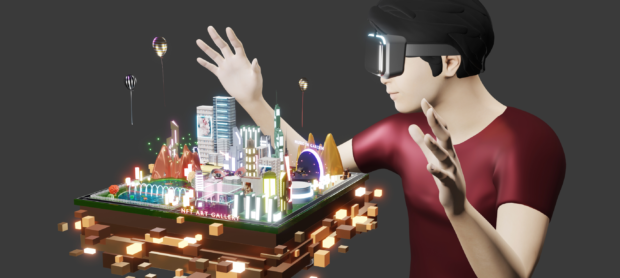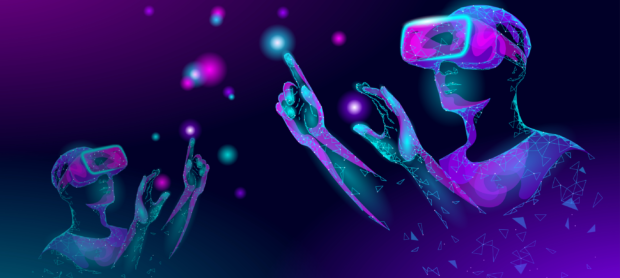The Metaverse is coming. And it’s going to change everything we know about the internet and our interactions with it. Technology’s rapid evolution has ushered in breathtaking breakthroughs, from smartphones to social media omnipresence, which merely foreshadow the vast potential the Metaverse holds.
Envision the Metaverse as an expansive digital cosmos, a realm where individuals engage, forge, revel, wander, and even labor, transcending the confines of tangible reality. Picture a realm wherein your cherished games, social platforms, and creative outlets merge seamlessly into a single, all-encompassing, interconnected habitat.
The Metaverse
An online virtual environment called the Metaverse serves as an alternative reality where users may interact with one another, play games, and create objects. Its moniker, “the Metaverse,” comes from Neal Stephenson’s “Snow Crash,” a book in which the protagonists explore a fascinating virtual world using VR goggles.
Melding the realms of virtual reality (VR) and augmented reality (AR), the Metaverse births an all-encompassing, immersive realm, blurring the lines between the digital and the corporeal. Here, users are granted passage to an extraordinary range of mixed-reality experiences, from the purely virtual to those that intertwine the tangible with the digital. These mixed-reality encounters include the following:
1. Augmented Virtuality: This is a blend of reality and computer-generated graphics, augmented virtuality fuses world with virtual elements, elevating one’s experience within this digital realm. A prime exemplar of such an innovative approach is none other than Google Earth, wherein satellite imagery, maps, and meticulously crafted 3D models are woven together on a virtual globe, enabling explorers to traverse and engage with our planet’s digital doppelgänger.
2. Mixed Reality: Within the captivating sphere of mixed reality (MR), users find themselves enveloped in an environment where real-world objects coalesce with virtual components, resulting in an immersive and interactive milieu. Microsoft HoloLens exemplifies the capabilities of MR, casting holographic images upon users’ gazes, permitting them to toy with digital content whilst grounded in their physical surroundings.

Virtual Reality
In the realm of computer-simulated environments, Virtual Reality (VR) stands apart, granting users the opportunity to immerse themselves within fantastical realms through cutting-edge electronic gear such as headsets. The intricate replication of visual and auditory sensations enables VR to transport individuals to alternate dimensions and time periods, fostering the sensation of genuine presence.
Although virtual reality (VR) technology was first developed in the 1960s, it has significantly advanced since then and found use in a variety of industries outside of gaming and entertainment. These many applications are some examples:
Medicine: The medical sphere has embraced VR with open arms, utilizing it for the purpose of instruction and simulation. Medical practitioners can now hone their surgical acumen and diagnostic prowess within a secure, virtual milieu. As a result, these professionals achieve heightened proficiency and expertise, bolstering the prognosis for their patients.
Education and Training: The realm of education has also welcomed VR, with students across myriad disciplines reaping the benefits of immersive, experiential learning. By emulating lifelike situations, VR nurtures a deeper comprehension of intricate theories, fostering the development of problem-solving aptitude. Furthermore, industries such as aviation, manufacturing, and emergency response have harnessed the power of VR for workforce training, providing employees with authentic, yet manageable, environments in which to sharpen their skills.

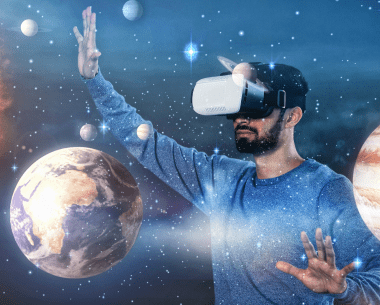
Architecture and Design: Visionaries within the fields of architecture and design harness the capabilities of VR to conceptualize and manifest three-dimensional representations of their innovative projects. This invaluable tool allows them to appraise designs and implement alterations prior to the commencement of construction, conserving both temporal and monetary resources.
As technological breakthroughs persist, it is plausible that the scope of VR will continue to broaden, solidifying its position as an instrumental apparatus for the augmentation of human experiences across a diverse array of disciplines. By delivering immersive, true-to-life environments, VR is revolutionizing the manner in which we acquire knowledge, accomplish tasks, and engage with the multifaceted world that surrounds us.
Augmented Reality
In order to enhance our experience of reality, augmented reality (AR) technology overlays digital material such as music, video, graphics, or GPS data over a live image of the actual world. Science fiction books and movies have often used holographic projectors to depict augmented reality, which is frequently shown as 3D things floating in the air.
AR has the ability to alter a variety of sectors in the context of enterprises by giving consumers immersive experiences:
Retail: Using augmented reality, buyers may visually try on clothing or see furniture in their homes before making a purchase, improving the buying experience. In addition to increasing consumer involvement, this lowers the chance of returns.
Tourism and hospitality: AR apps may provide visitors interactive guides by superimposing historical information, travel instructions, or translations on actual sites. Visitors benefit from this by getting vital information, which enhances their vacation experience.
Marketing & advertising: Companies may use augmented reality (AR) to develop interactive marketing campaigns that bring items to life and engage consumers in novel ways. Customers may, for instance, use AR to scan a product’s packaging to access more details, deals, or interactive content.
Education and Training: Augmented reality (AR) may improve workplace training by giving workers real-time information and direction while they complete tasks, boosting productivity and lowering the learning curve.
Manufacturing and Maintenance: By superimposing real-time data, schematics, or instructions on top of equipment, AR apps may help technicians and engineers, simplifying complicated operations and lowering the margin of error.
As augmented reality (AR) technology develops, it will find applications across a wide range of sectors, altering how companies interact with their consumers and organize their operations. AR has the potential to provide everyone access to a more immersive and participatory future by seamlessly fusing the real and digital worlds.

Mixed Reality
Mixed reality is a cutting-edge technology that fuses aspects of the real and virtual worlds. It includes virtual reality (VR), which totally immerses users in a digital environment, and augmented reality (AR), which overlays digital material on the actual world.
As it enables real-time interaction with both physical surroundings and digital interfaces, MR represents the technological frontier. With MR, users can see and interact with their surroundings while wearing gadgets like Google Glass, Microsoft’s HoloLens, and Oculus Rift, which project information directly onto the user’s field of vision.
The following are a few of mixed reality’s main advantages:
Enhanced Collaboration: MR makes it possible for people to collaborate online regardless of where they are physically located. Collaboration and communication are made easy as a result, transforming fields like design, engineering, and architecture.
Immersive Learning: Mixed reality provides fun and interactive learning opportunities that let students investigate difficult ideas and hone abilities in actual settings. The memory and understanding of what is being learned may improve with this hands-on approach.
Streamlined Workflows: By overlaying real-time data, instructions, or visualizations on the actual world, MR has the potential to increase productivity across a range of sectors. This may help professionals make wise judgments and carry out jobs more precisely and effectively.
Personalized Experiences: Users of mixed reality may get information, entertainment, or help that is specifically catered to their requirements and tastes.
Increased Accessibility: MR can help people with impairments overcome obstacles by providing creative solutions for communication, engagement, and navigation in both real and digital worlds.
The influence of mixed reality will be seen in many areas of our life as it develops, changing how we interact with technology and the environment. Mixed reality is paving the way for a future that is more connected, immersive, and accessible by fusing the real and virtual worlds.
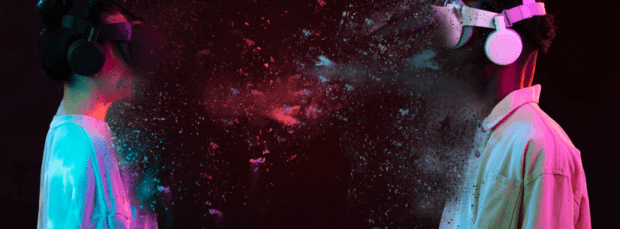
Virtual Worlds
Immersive digital realms, often referred to as virtual worlds, mimic real-life settings and facilitate a plethora of interactions amongst users, ranging from forging friendships to conducting business transactions. Such online universes cater to a vast array of requirements, be it professional, educational, recreational, or even personal.
The genesis of virtual worlds dates back to the 1980s when visionary computer scientists endeavored to fashion cyberspaces that allowed individuals to mingle and collaborate without physical proximity. These pioneering online spaces initially employed text-based interfaces, necessitating users to input commands through their keyboards. As technological advancements unfolded, virtual worlds metamorphosed into more intricate graphical platforms, integrating imagery and user-friendly controls, thus simplifying navigation and interaction.
Virtual worlds boast an eclectic mix of characteristics and applications, a few of which are enumerated below:
Social Interplay: Digital realms foster vibrant social networks, presenting users with opportunities to encounter diverse individuals, partake in collective endeavors, and nurture enduring companionships within these electronic microcosms.
Recreation and Virtual Adventures: These online spaces proffer an extensive gamut of gaming and entertainment alternatives, spanning from laid-back diversions to epic massively multiplayer online role-playing games (MMORPGs), catering to an assortment of tastes and predilections.
Artistic Manifestation: Virtual worlds present users with a canvas for their ingenuity, allowing them to craft distinctive avatars, erect architectural marvels, and even author their own interactive sagas.
Commercial Undertakings: The corporate sphere can harness the potential of virtual worlds for promotional endeavors, professional networking, and even establishing digital boutiques, proffering goods and services to inhabitants of these virtual domains.
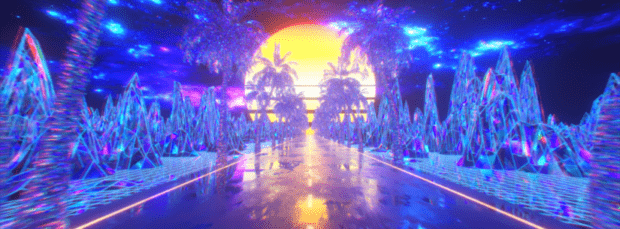
Conclusion
The Metaverse serves as a virtual environment where people may work, play games, and interact with friends from across the world. It symbolizes the future of entertainment, communication, and commerce. The Metaverse will gradually permeate our lives as technology develops, altering how we connect with one another and the outside world.
Eventyr is here to assist you if you want to investigate the infinite possibilities of the Metaverse. Our highly skilled team of professionals is prepared to work under your direction to bring your idea to reality smoothly. Eventyr provides the skills and resources you need to build unique educational platforms, virtual storefronts, or immersive gaming experiences.
Take action right now to start living your dream in the Metaverse. For more information, contact with Eventyr right now, and let us help you on the thrilling road of bringing your concept to life online.


